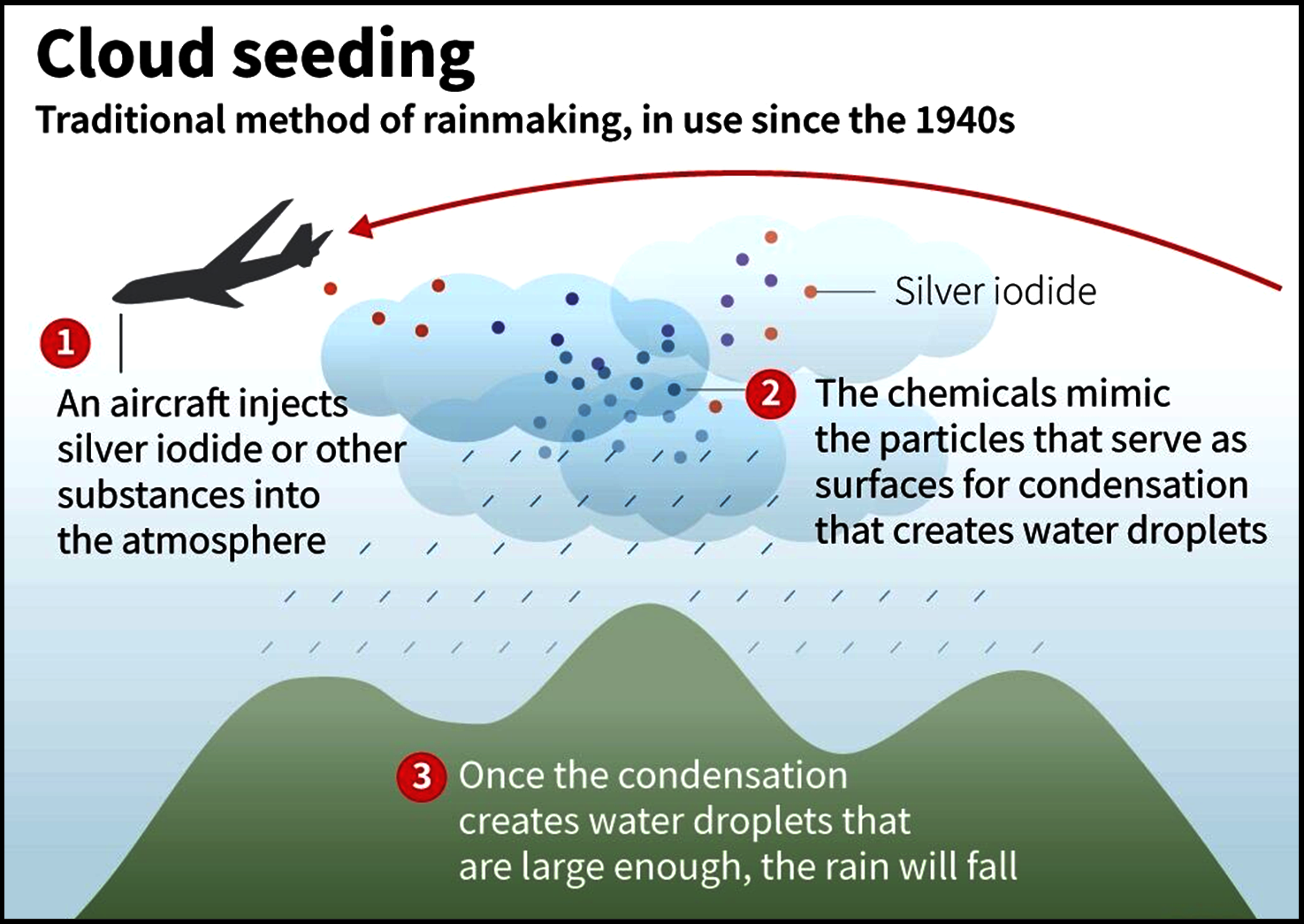Cloud Seeding | 09 May 2025
The Delhi Cabinet has approved a project to conduct cloud seeding trials aimed at addressing air pollution and water scarcity.
- Cloud Seeding: It is a weather modification technique that enhances precipitation by dispersing chemicals like silver iodide, potassium iodide, or dry ice into clouds, serving as nuclei for water droplet formation, leading to rainfall.
- It can help combat air pollution, especially during periods of high Air Quality Index (AQI) readings.
- Cloud seeding may increase water availability and result in economic, environmental, and human health benefits.
- Types of Cloud Seeding: Static cloud seeding, which involves introducing ice nuclei into cold clouds to form ice crystals or snowflakes.
- Dynamic cloud seeding, which stimulates rainfall by enhancing vertical air currents and promoting rain cloud growth.
- Hygroscopic cloud seeding, which uses fine particles of salts to increase cloud droplet size.
- Glaciogenic cloud seeding, which induces ice formation in supercooled clouds to trigger precipitation. It is used for enhancing snowfall, increasing mountain snowpack, inducing rain in drought-hit areas, and reducing air pollution.
| Read more: Cloud Seeding to Reduce Air Pollution |

